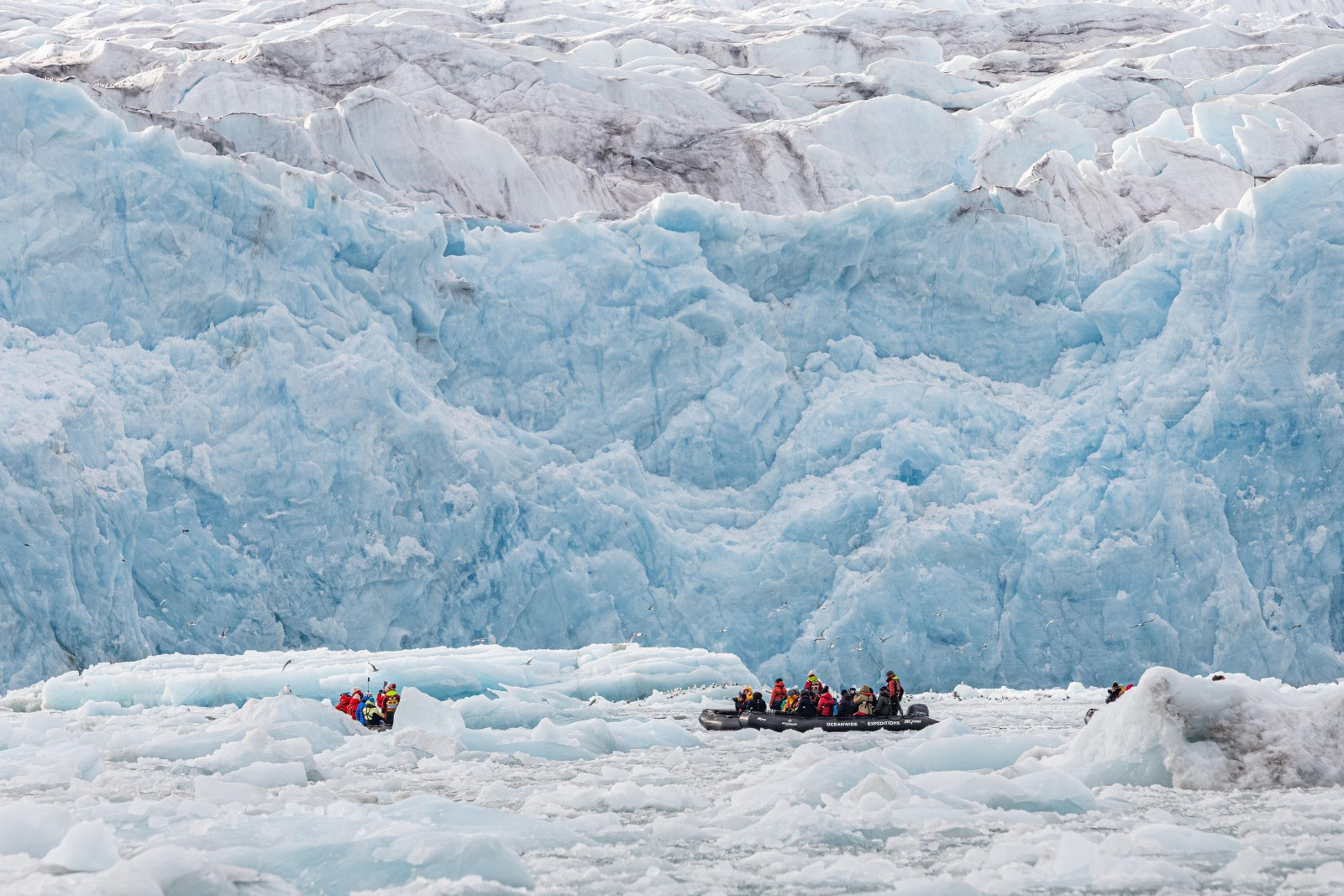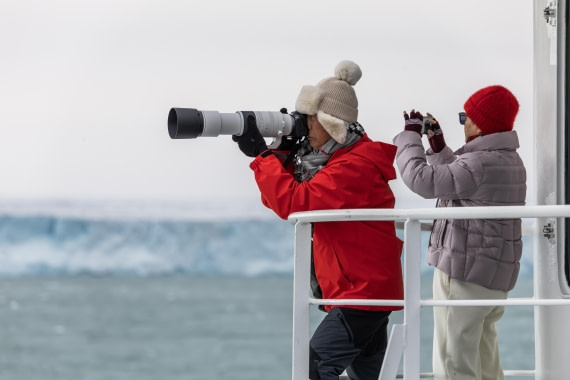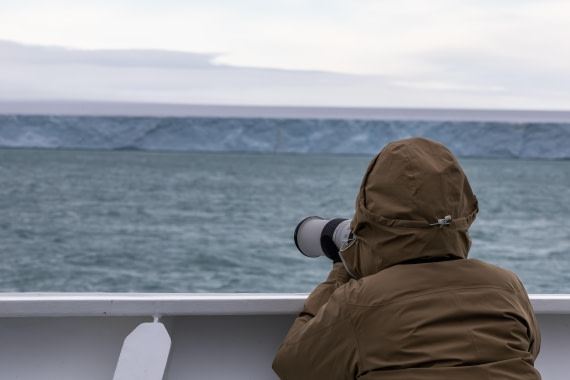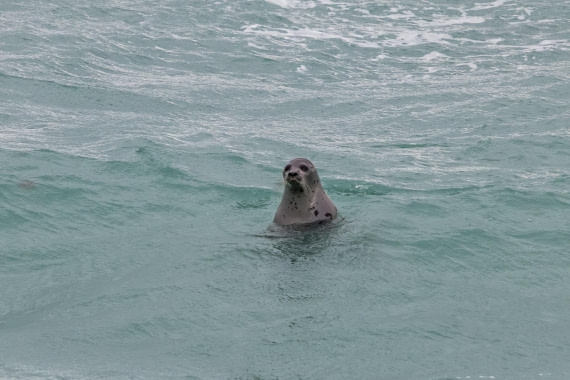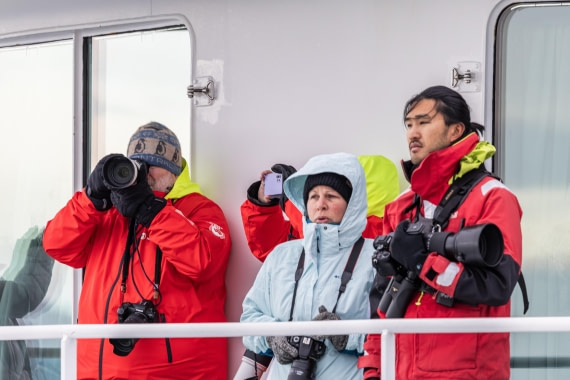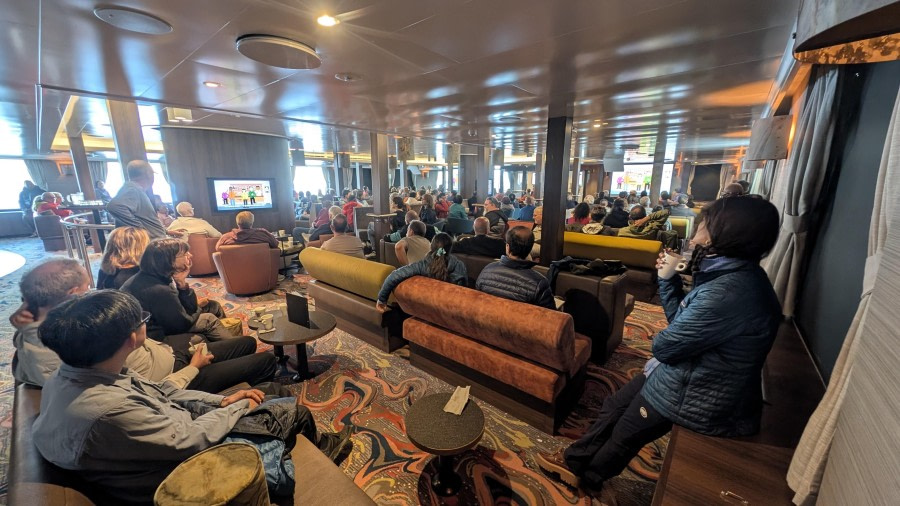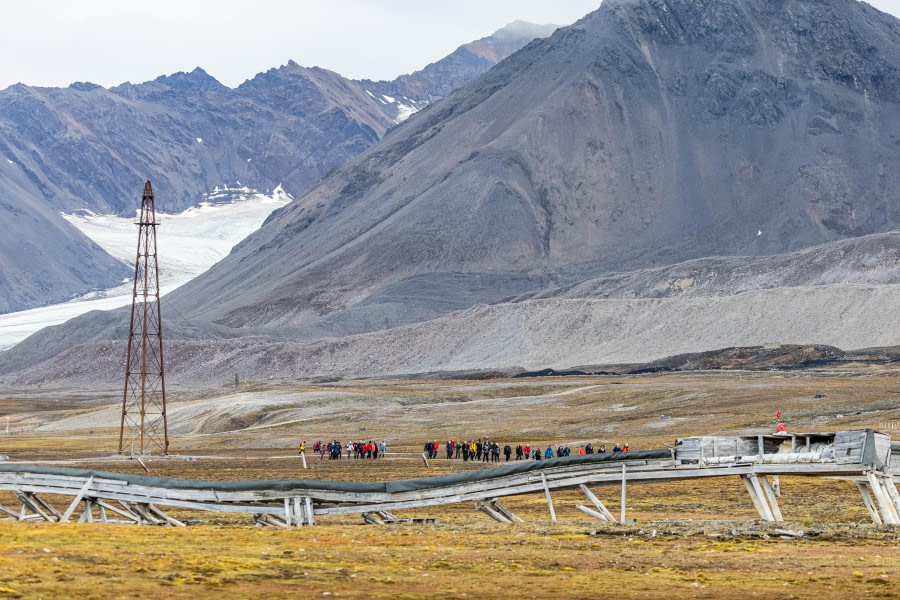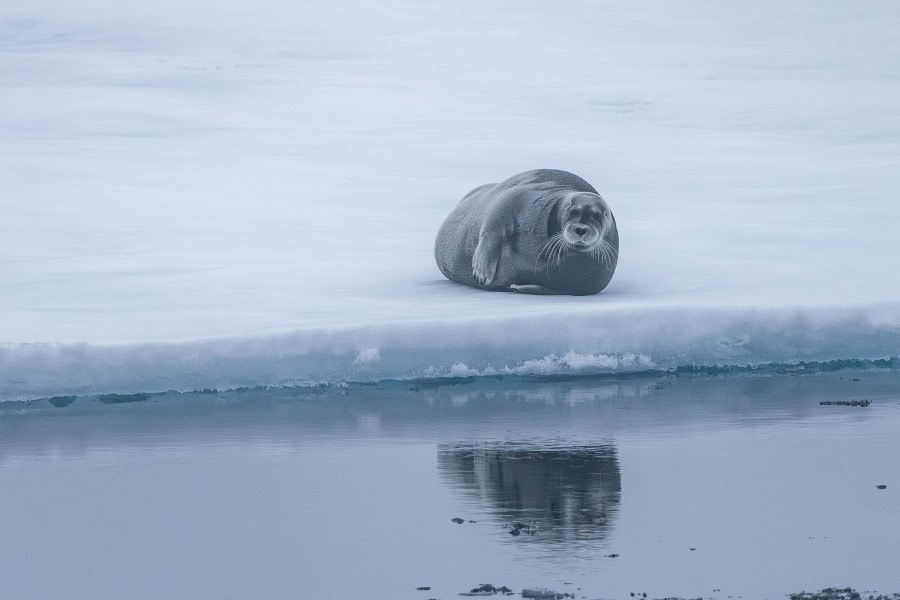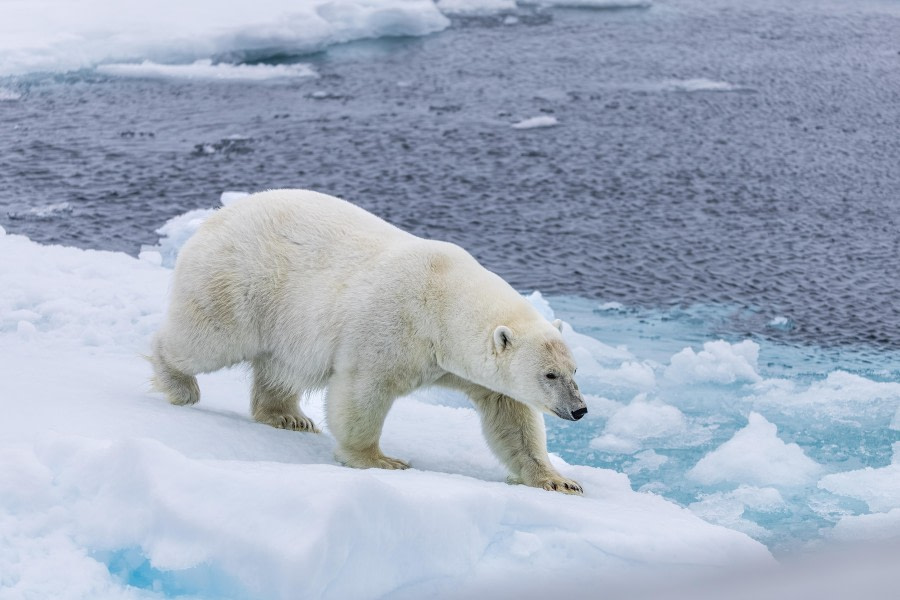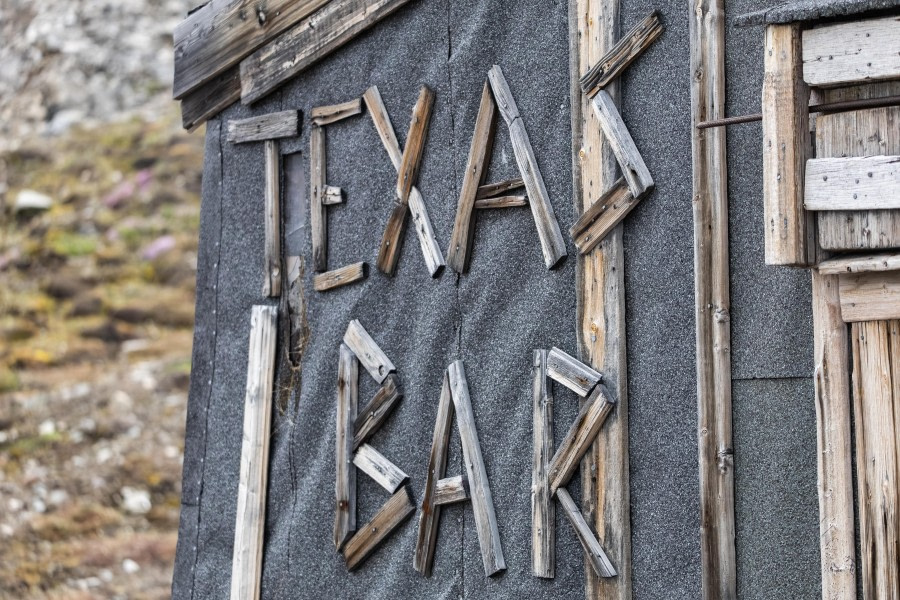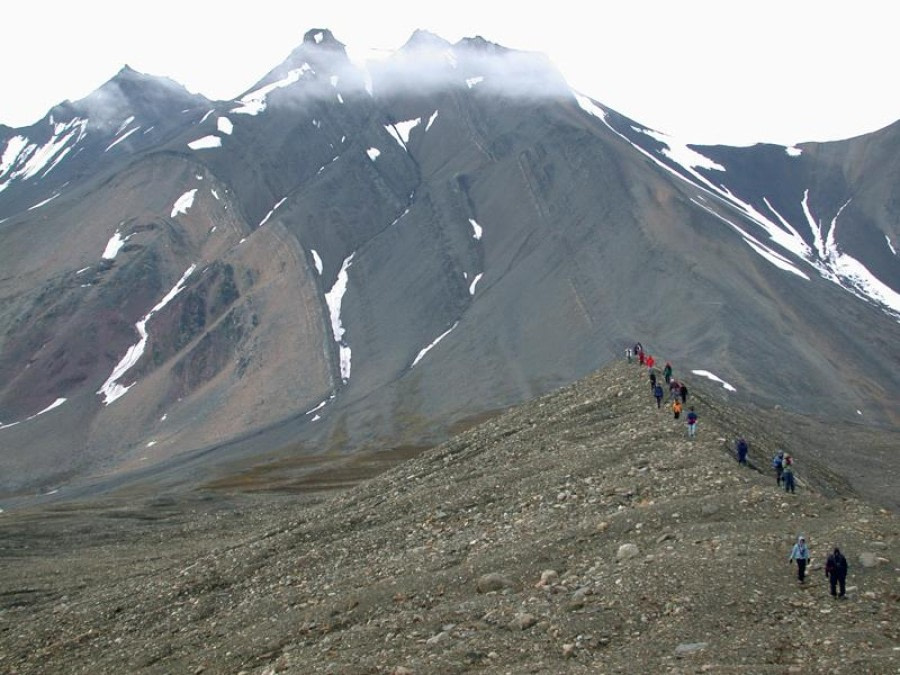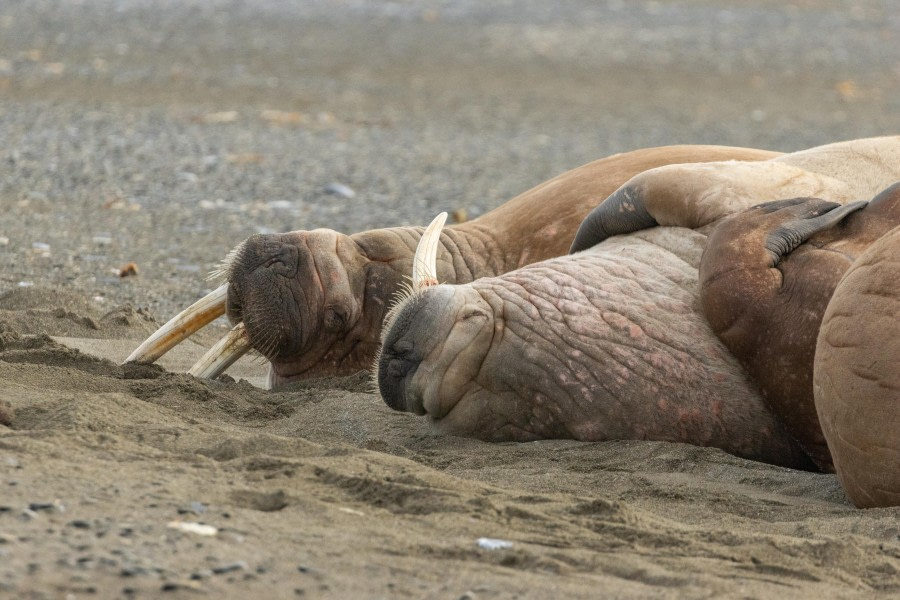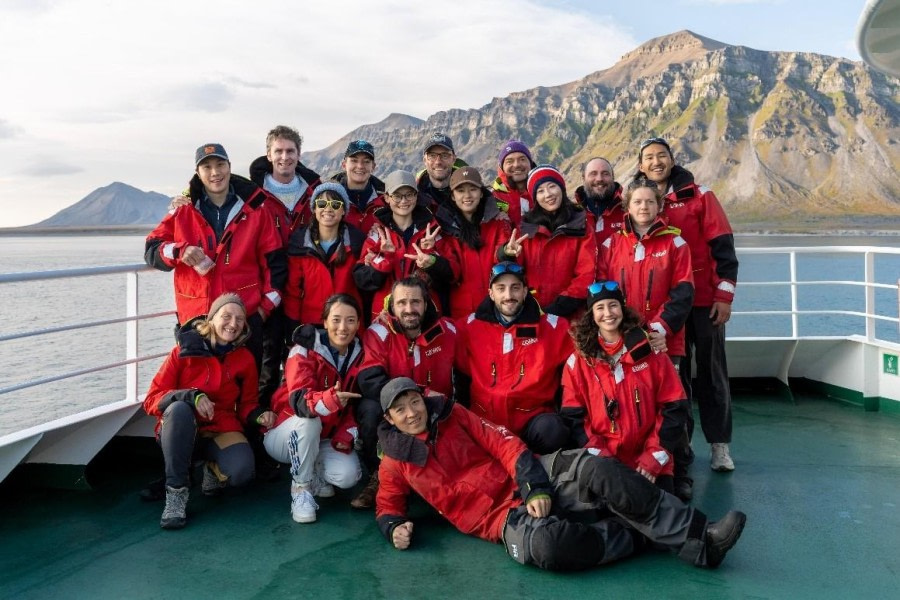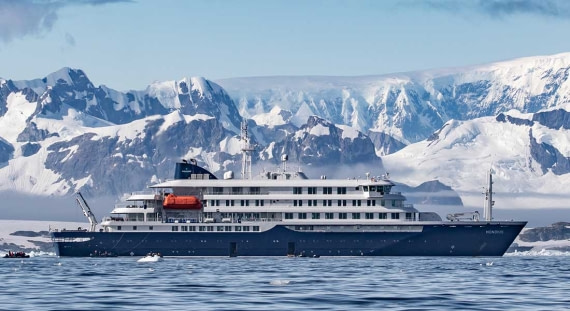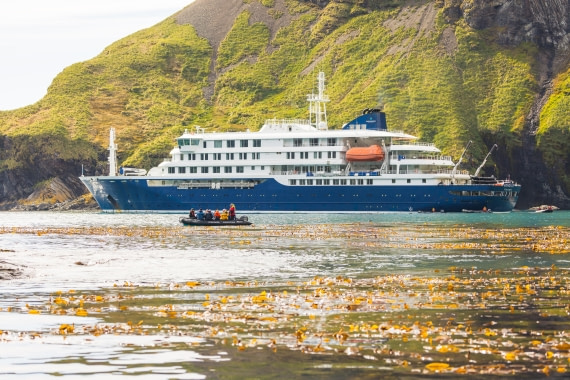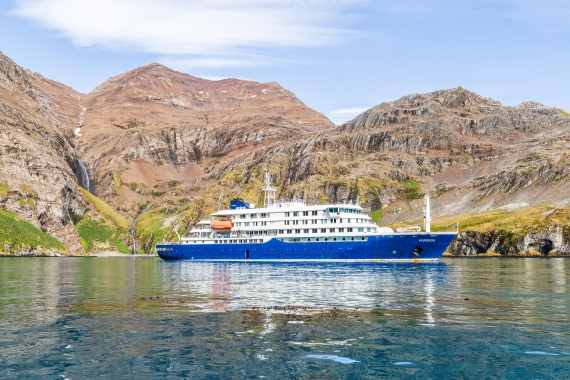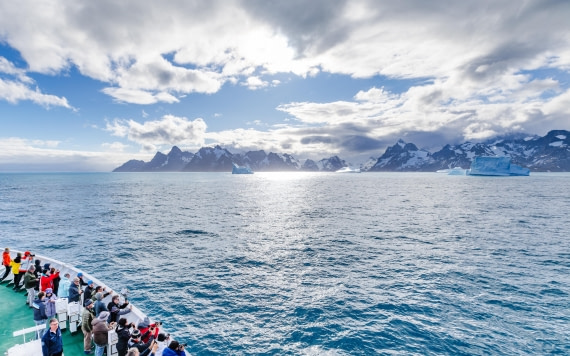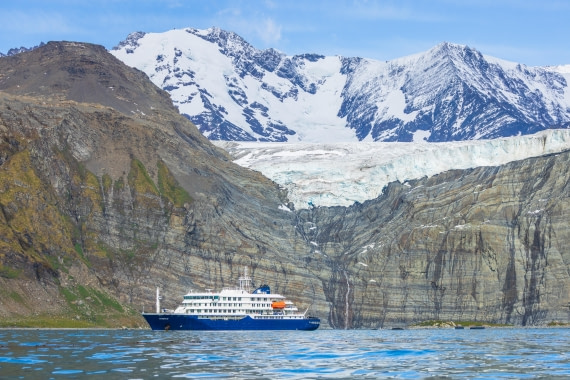| Date: |
17.08.2025 |
| Position: |
82°08.0’N, 018°00.3’E |
| Wind: |
W4 |
| Weather: |
Fog |
| Air Temperature: |
+1 |
At 10 a.m., the expedition leader suddenly announced we would land on the sea ice! Despite the thick fog and poor visibility, everyone's enthusiasm remained undimmed. We put on our life jackets and boarded the Zodiacs in groups, heading toward the floating ice.
The moment we stepped onto the ice, a faint crack sounded beneath our feet, as if we were stepping on the breath of thousand-year-old ice. The mist enveloped everything, and the Hondius nearly vanished into the white void, leaving only a faint outline. We stood like true explorers at the edge of the world, our feet on ice that had existed for millennia, surrounded by silence so profound we could hear our own heartbeats.
We took turns posing for photos on the ice. The expedition team reminded us to stay safe, but excitement was written on every face—after all, standing on Arctic sea ice was already a once-in-a-lifetime experience!
Unfortunately, the fog grew thicker, and for safety reasons, we had to cut the landing short. As we returned to the ship, the Zodiacs sliced through the dark blue water, leaving the drifting ice behind like a fading dream.
At 3:15 p.m., Tiphanie was giving a lecture on Arctic seals in the observation lounge, and everyone was engrossed. Suddenly, Expedition Leader Chris’s voice crackled over the intercom:
“Everyone! Possible polar bear sighting at 1 o’clock, a few kilometers away!”
The room erupted in excitement! The lecture came to an abrupt halt as everyone grabbed their jackets and cameras, rushing to the deck. Binoculars were passed around, and we all held our breaths, straining to spot that legendary figure.
At first, it was just a tiny white speck on the ice, nearly blending in with the floes. But as the ship slowly approached, its outline became clearer—an adult polar bear, lazily napping on the ice!
We dared not make a sound, afraid to disturb it. Camera shutters were set to silent mode, and everyone simply watched in quiet reverence, as if partaking in a sacred ritual.
Then, its ears twitched slightly. It lifted its head, blinking sleepily as it surveyed its surroundings. When it noticed our ship, it showed no alarm. Instead, it rose leisurely, shook out its thick fur like someone straightening a coat, and began walking toward us!!!
A hushed gasp spread across the deck. Some clutched their companions’ arms; others covered their mouths to stifle their excitement. The bear moved with calm, deliberate steps. It stopped just a few meters from the ship, lifted its head, and studied us with dark, curious eyes.
Time seemed to freeze in that moment. We stood face-to-face with one of the Earth’s most powerful land predator—not with fear, but with awe. It sniffed the air, as if assessing whether we posed any threat. As it closed the distance to within ten meters, we could see every detail: the mist of its breath in the cold air, the tiny ice crystals clinging to its fur. This was a bear in its prime—broad shoulders supporting a thick layer of fat, a rounded belly swaying slightly as it moved, powerful hind legs visible beneath its fluffy coat.
Then, as if deciding we were unworthy of further attention, this graceful predator turned and ambled away, leaving deep paw prints in the ice.
The ship slowly pulled away, and as the bear’s figure disappeared into the mist, we were left brimming with satisfaction, eagerly discussing this rare encounter. Some scrolled excitedly through their photos, while others relived every second in their minds. Tiphanie laughed and said, “Well, I guess my seal lecture lost to live fieldwork!” But no one really minded—because today, we had witnessed the true king of the Arctic.
As we returned to our cabins, our fingers numb from the cold, we knew our hearts were warm. Tonight’s dinner would surely be filled with bear stories, and this memory would stay with us forever—a priceless treasure from the polar wilderness.
